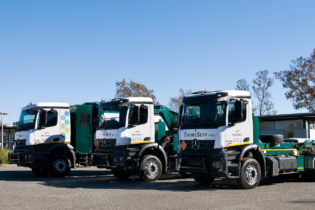It will be challenging for the National Development Plan (NDP) to meet this target of 30% by 2030, sayd Old Mutual Investment Group Senior Economist Johann Els and Head of Infrastructure Jurie Swart. It is vital to build capacity to effect the investment roll-out.
Fixed investment makes up 19% of South Africa’s Gross Domestic Product (GDP), with private fixed investment contributing 63% of the country’s total fixed investment. Public corporations make up 21% of the total and Government fixed investment constitutes 16%. Els says this makes the private sector a significant factor in the NDP’s target. “Private sector fixed investment needs low interest rates and strong economic growth to thrive, with a strong government infrastructure drive helping boost this growth,” he explains. “Currently we’re seeing low interest rates, but sluggish and unexciting growth and while some replacement investment is happening, the economy is simply not strong enough to drive significant new private sector investment.” While the the Building & Construction confidence survey conducted by the BER shows that confidence levels of some construction sectors and contracts have improved recently, this is not translating into capacity levels. Swart and Els believe that South African infrastructure investment is facing significant capacity challenges when it comes to the availability of its architects, engineers, project managers, financial managers at a local government level.“Government has a good infrastructure plan on the table, but the bottom line is that they need more infrastructure specialists,” says Swart. “If you look at Government’s labour force in the infrastructure arena, engineers are in shortest supply, followed by technologists and technicians, compared to the number of superintendents, foremen, artisans and operators. Labourers outnumber all of these specialist and middle management roles.”
Els says investment indicators for fixed investment and infrastructure in particular are not looking very exciting either. “These include factors such as machinery imports as an indicator of machinery investment, the passing of building plans as an indicator of building fixed investment, and commercial vehicle sales as an indicator of transport fixed investment,” he says. “The days of Government’s huge infrastructure boom between 2004 and 2007 are over and while there are still billions of rand to be spent over the next few years, the growth rate has dropped sharply compared to what we saw during that period.” Old Mutual Investment Group views infrastructure as a distinct long-term savings class, says Swart, although it is still too small at this stage. “Old Mutual established its infrastructure investment capability in the mid-1990s, although the Renewable Energy Programme has attracted broader investor attention recently,” he explains. The Old Mutual Group’s infrastructure investment and commitments currently total R10 billion in equity investment and R15.6 billion in debt investment.







